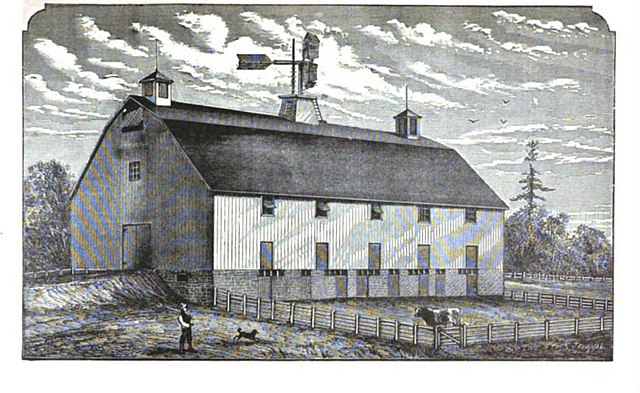An outbuilding, sometimes called an accessory building or a dependency, is a building that is part of a residential or agricultural complex but detached from the main sleeping and eating areas. Outbuildings are generally used for some practical purpose, rather than decoration or purely for leisure. This article is limited to buildings that would typically serve one property, separate from community-scale structures such as gristmills, water towers, fire towers, or parish granaries. Outbuildings are typically detached from the main structure, so places like wine cellars, root cellars and cheese caves may or may not be termed outbuildings depending on their placement. A buttery, on the other hand, is never an outbuilding because by definition is it is integrated into the main structure.
Etching of a Canadian barn (1888)
Slave quarters in the United States
Slave quarters in the United States, sometimes called slave cabins, were a form of residential vernacular architecture constructed during the era of slavery in the United States. These outbuildings were the homes of the enslaved people attached to an American plantation, farm, or city property. Some former slave quarters were continuously occupied and used as personal residences until as late as the 1960s.
Sotterley Slave Cabin, built sometime between 1830 and 1850 in the Tidewater region, photographed 2011
A former slave cabin near Eufaula, Barbour County, Alabama, still in use as a residence and photographed c. 1936 for the Slave Narratives project of the Works Progress Administration
Former slave quarters at Jefferson Davis' plantation Brierfield in Mississippi, drawn by A.R. Waud, etching published 1866 in Harper's Weekly
Urban slave quarters at the Aiken-Rhett House, Charleston, South Carolina





